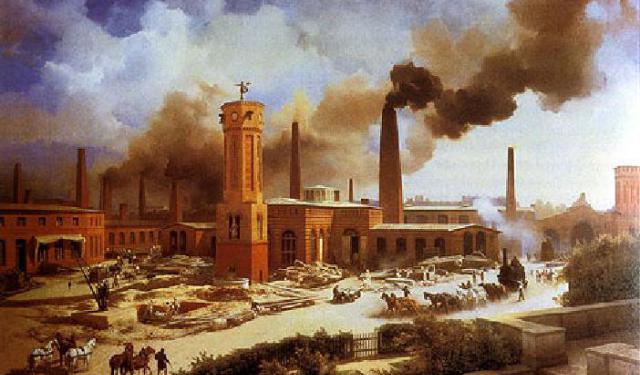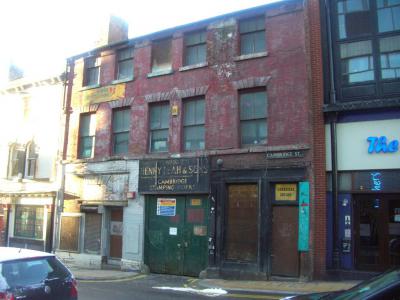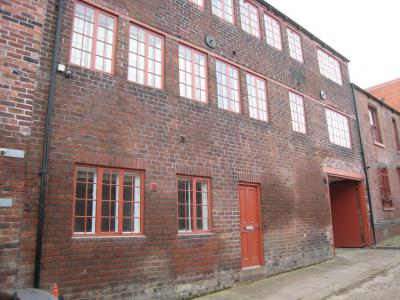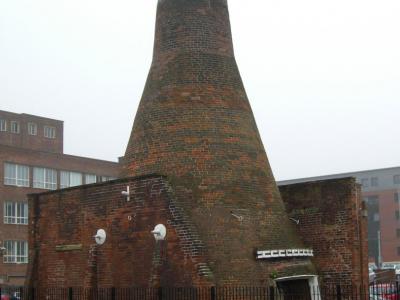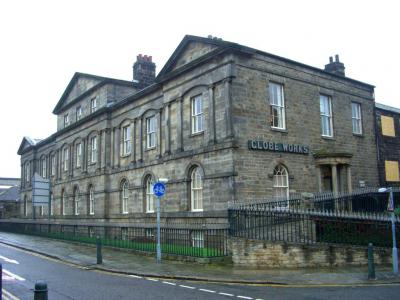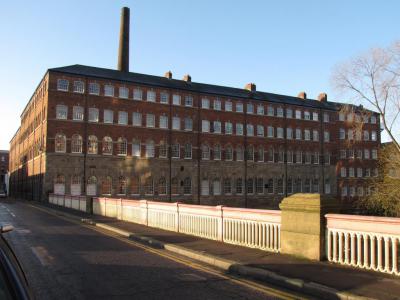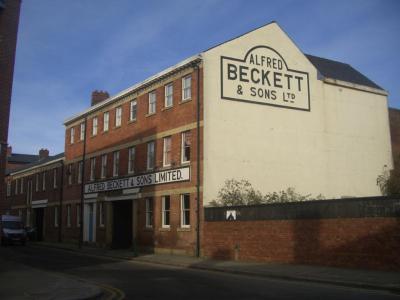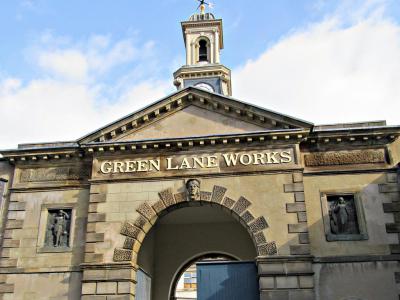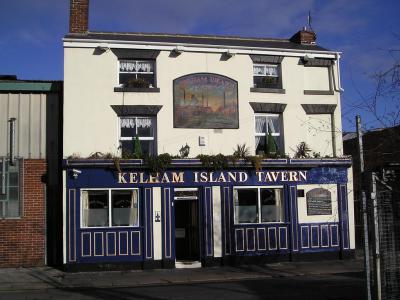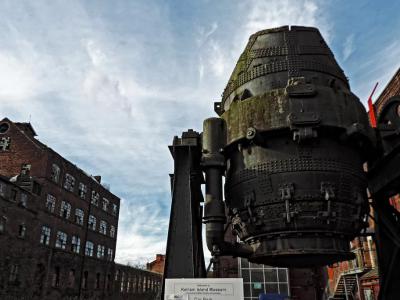Industrial Revolution Heritage Walking Tour (Self Guided), Sheffield
Steeped in history, the city of Sheffield is famed for its contribution to the Industrial Revolution, largely due to the development of stainless steel. Indeed, the “Steel City” of the United Kingdom, it was internationally renowned as a major hub of steel manufacturing during the 19th century. So much so, in fact, that George Orwell once famously referred to it as “the ugliest town in the Old World” – probably because of the smoking furnace chimneys dominating the skyline.
Nowadays, the country's fourth largest city may well no longer be the bustling picture of steel mills, forges and cutlery factories it once was, but it is packed with a lot of prominent landmarks that are calling visitors from all across the world with their unique, gritty charm that envelops local community today.
If you wish to find out what it was like to live and work in Sheffield during the Industrial Revolution, follow the growth of the city throughout the Victorian Era and explore the sights and sounds of industrial Sheffield, take this self-guided walking tour!
Nowadays, the country's fourth largest city may well no longer be the bustling picture of steel mills, forges and cutlery factories it once was, but it is packed with a lot of prominent landmarks that are calling visitors from all across the world with their unique, gritty charm that envelops local community today.
If you wish to find out what it was like to live and work in Sheffield during the Industrial Revolution, follow the growth of the city throughout the Victorian Era and explore the sights and sounds of industrial Sheffield, take this self-guided walking tour!
How it works: Download the app "GPSmyCity: Walks in 1K+ Cities" from Apple App Store or Google Play Store to your mobile phone or tablet. The app turns your mobile device into a personal tour guide and its built-in GPS navigation functions guide you from one tour stop to next. The app works offline, so no data plan is needed when traveling abroad.
Industrial Revolution Heritage Walking Tour Map
Guide Name: Industrial Revolution Heritage Walking Tour
Guide Location: England » Sheffield (See other walking tours in Sheffield)
Guide Type: Self-guided Walking Tour (Sightseeing)
# of Attractions: 9
Tour Duration: 2 Hour(s)
Travel Distance: 3.1 Km or 1.9 Miles
Author: nicole
Sight(s) Featured in This Guide:
Guide Location: England » Sheffield (See other walking tours in Sheffield)
Guide Type: Self-guided Walking Tour (Sightseeing)
# of Attractions: 9
Tour Duration: 2 Hour(s)
Travel Distance: 3.1 Km or 1.9 Miles
Author: nicole
Sight(s) Featured in This Guide:
- Leah's Yard
- Well Meadow Street Crucible Furnace
- Cementation Furnace
- Globe Works
- Cornish Place
- Brooklyn Works
- Green Lane Works
- Kelham Island Tavern
- Kelham Island Industrial Museum
1) Leah's Yard
A former collection of small industrial workshops in the heart of Sheffield, Leah's Yard serves as an example of the city's industrial heritage.
It was constructed in the early 19th century as a works for the manufacture of shears and other hand tools. Leah's Yard had had many different occupants throughout the century, and subsequently undergone many alterations and additions which are visible today. In the 1880s, the building was known as the Cambridge Street Horn Works (after a horn dealer who supplied the cutlery handle making trade).
In 1892, Henry Leah, a producer of die stamps for silverware, took over the property, giving it its present name. Another occupier of the building at that time were the piercers and stampers – Walter Walker & Company Ltd. – after whom the building was alternatively known as the Cambridge Stamping Works.
By 1905, the Yard was occupied by a total of eighteen small businesses including dram flask manufacturer, hollow ware and silver buffers, palette knife makers, steel fork manufacturer, silver ferrule maker, brass and nickel silver turners, electroplate producer and a cutler.
The front of the building, overlooking Cambridge Street, has a carriage entrance which opens up into a small rear courtyard surrounded by small two- and three-storey brick workshops. There are external wooden staircases to give access to the upper floors and large casement windows to give plenty of natural light for the workmen.
Until recently, Leah's Yard stood in a derelict state, having not been fully used for over 20 years (except for the lower floor, used as a shop), and was saved from demolition solely by its listed status. A significant restoration effort is currently underway to bring the property back into use once again.
It was constructed in the early 19th century as a works for the manufacture of shears and other hand tools. Leah's Yard had had many different occupants throughout the century, and subsequently undergone many alterations and additions which are visible today. In the 1880s, the building was known as the Cambridge Street Horn Works (after a horn dealer who supplied the cutlery handle making trade).
In 1892, Henry Leah, a producer of die stamps for silverware, took over the property, giving it its present name. Another occupier of the building at that time were the piercers and stampers – Walter Walker & Company Ltd. – after whom the building was alternatively known as the Cambridge Stamping Works.
By 1905, the Yard was occupied by a total of eighteen small businesses including dram flask manufacturer, hollow ware and silver buffers, palette knife makers, steel fork manufacturer, silver ferrule maker, brass and nickel silver turners, electroplate producer and a cutler.
The front of the building, overlooking Cambridge Street, has a carriage entrance which opens up into a small rear courtyard surrounded by small two- and three-storey brick workshops. There are external wooden staircases to give access to the upper floors and large casement windows to give plenty of natural light for the workmen.
Until recently, Leah's Yard stood in a derelict state, having not been fully used for over 20 years (except for the lower floor, used as a shop), and was saved from demolition solely by its listed status. A significant restoration effort is currently underway to bring the property back into use once again.
2) Well Meadow Street Crucible Furnace
The Well Meadow Street Crucible Furnace is part of 35 Well Meadow Street, a series of industrial buildings that are Grade II star listed buildings. These are considered some of the city's most important industrial monuments.
The Well Meadow Street complex includes the crucible furnace, the courtyard, two attached workshops, and the owner's house. It was developed in 1840 by the established industrial firm of Samuel Peace, which made small hand and farm tools. The manufacturing process included primary steel production in the crucible furnace and finishing the final product in the adjacent workshop.
The building is constructed from brick with stone details and a slate roof. The furnace has vertical iron straps, six crucible holes, and a brick cellar. Each of the workshops is three stories high. Like the furnace, they are made of brick.
Manufacturing at the Well Meadow Street facility ceased in 1926. Most of the housing and buildings around the complex were demolished, while the few buildings left became derelict.
The Well Meadow Street complex includes the crucible furnace, the courtyard, two attached workshops, and the owner's house. It was developed in 1840 by the established industrial firm of Samuel Peace, which made small hand and farm tools. The manufacturing process included primary steel production in the crucible furnace and finishing the final product in the adjacent workshop.
The building is constructed from brick with stone details and a slate roof. The furnace has vertical iron straps, six crucible holes, and a brick cellar. Each of the workshops is three stories high. Like the furnace, they are made of brick.
Manufacturing at the Well Meadow Street facility ceased in 1926. Most of the housing and buildings around the complex were demolished, while the few buildings left became derelict.
3) Cementation Furnace
The Cementation Furnace is a historic steel-making furnace in Sheffield. It is the only one of its kind surviving intact in Great Britain. Due to its historical importance, it has been designated as a Grade II listed building.
The Cementation Furnace was built in 1848. Its purpose was to produce steel for the firm of Daniel Doncasters and Sons. The furnace was used on Blister steel until 1870. Blister steel was the first type of commercially produced steel. The process in the cementation furnace left it with a blistered appearance, hence its name. The furnace remained in use until 1952.
Though there were more than 250 cementation furnaces at the time, all others have been destroyed or damaged. During World War II, the Cementation Furnace was fitted with a blackout cover as a precaution during air raids.
The furnace was restored in 1993 and is now a popular spot for visitors to Sheffield. It is surrounded by a locked, gated fence. Those who wish to enter the furnace may receive a key to the gate from the Kelham Island Museum.
The Cementation Furnace was built in 1848. Its purpose was to produce steel for the firm of Daniel Doncasters and Sons. The furnace was used on Blister steel until 1870. Blister steel was the first type of commercially produced steel. The process in the cementation furnace left it with a blistered appearance, hence its name. The furnace remained in use until 1952.
Though there were more than 250 cementation furnaces at the time, all others have been destroyed or damaged. During World War II, the Cementation Furnace was fitted with a blackout cover as a precaution during air raids.
The furnace was restored in 1993 and is now a popular spot for visitors to Sheffield. It is surrounded by a locked, gated fence. Those who wish to enter the furnace may receive a key to the gate from the Kelham Island Museum.
4) Globe Works
The Globe Works is a former cutlery factory which is now a listed heritage site. Designed by the architects Henry and William Ibbotson, for the edge tool manufacturers Ibbotson & Roebank, it was built in 1825 and, as such, remains one of England's oldest surviving cutlery and tool factories, and, possibly, the first purpose-built such enterprise in the world.
Eminent industrialist, Charles Cammell, worked here, for Ibbotson Brothers, between 1830 and 1837, prior to setting up his own firm. Another well known industrialist, William Edgar Allen, worked at the Globe Works as a young man before leaving to set up the Edgar Allen and Company steelworks, in 1867. In 1852, John Walters moved his knife-making business here from the city centre.
The building has an ornamental Classical Revival-style façade made of coarse square stone and brick. The frontage features two storeys with nine windows on each storey, and a pedimented middle section with an additional half storey. Back in the day, behind this façade there were furnaces, a manager's residence and a cobbled courtyard with many smaller workshops. The owner's house was also integrated into the design, at the southern end, which is the probable reason for the façade's grandness. Entrance to the house was in the side wall, which today serves as the main entrance to and reception hall of the building.
Entrance to the factories, inside the courtyard, was through an enormous archway, to the right, designed to allow passing of horse-driven carts and carriages. The upstairs packing rooms and office had to be accessed via an outside staircase.
In 1970, the Globe Works was nearly demolished in order to make space for an urban motorway construction. Later in the decade, the building suffered extensive damage from an arson attack, in 1978. During the late 1980s, it was renovated, as part of the Kelham Island Conservation Area, seeing much of its original fabric retained, and was turned into a modern office space. The latter, known as the Globe Business Centre, is now home to nearly two dozen companies.
Eminent industrialist, Charles Cammell, worked here, for Ibbotson Brothers, between 1830 and 1837, prior to setting up his own firm. Another well known industrialist, William Edgar Allen, worked at the Globe Works as a young man before leaving to set up the Edgar Allen and Company steelworks, in 1867. In 1852, John Walters moved his knife-making business here from the city centre.
The building has an ornamental Classical Revival-style façade made of coarse square stone and brick. The frontage features two storeys with nine windows on each storey, and a pedimented middle section with an additional half storey. Back in the day, behind this façade there were furnaces, a manager's residence and a cobbled courtyard with many smaller workshops. The owner's house was also integrated into the design, at the southern end, which is the probable reason for the façade's grandness. Entrance to the house was in the side wall, which today serves as the main entrance to and reception hall of the building.
Entrance to the factories, inside the courtyard, was through an enormous archway, to the right, designed to allow passing of horse-driven carts and carriages. The upstairs packing rooms and office had to be accessed via an outside staircase.
In 1970, the Globe Works was nearly demolished in order to make space for an urban motorway construction. Later in the decade, the building suffered extensive damage from an arson attack, in 1978. During the late 1980s, it was renovated, as part of the Kelham Island Conservation Area, seeing much of its original fabric retained, and was turned into a modern office space. The latter, known as the Globe Business Centre, is now home to nearly two dozen companies.
5) Cornish Place
Cornish Place is the location of what was once the factory of James Dixon & Sons. The factory manufactured metal, plates, and cutlery. The east and west ranges of the building hold Grade II star listed status, while the rest of the works are designated as slightly lower Grade II listed buildings.
James Dixon began his business in 1805, operating on the site of what would become Cornish Place in 1819. Manufacturing facilities were erected during the 1830s. Further construction took place in the 1850s to add steam power to the manufacturing process.
The main building was constructed from bricks with decorative elements from ashlar. The roof was made from cement and slate. The first floor, with arched windows, was made with fireproof cast iron. There are four floors in total.
Production continued at the facilities until 1992. After years of gradual decline, James Dixon & Sons was bought out by a British Silverware company. In 1998, the factory was converted into apartments by Axis Architecture firm.
James Dixon began his business in 1805, operating on the site of what would become Cornish Place in 1819. Manufacturing facilities were erected during the 1830s. Further construction took place in the 1850s to add steam power to the manufacturing process.
The main building was constructed from bricks with decorative elements from ashlar. The roof was made from cement and slate. The first floor, with arched windows, was made with fireproof cast iron. There are four floors in total.
Production continued at the facilities until 1992. After years of gradual decline, James Dixon & Sons was bought out by a British Silverware company. In 1998, the factory was converted into apartments by Axis Architecture firm.
6) Brooklyn Works
Brooklyn Works is a former site of steel, saw, and file manufacture situated on Green Lane in the Kelham Island Quarter in Sheffield. The factory was constructed in the 19th century for the manufacturer Alfred Beckett & Sons. Brooklyn Works is designated as a Grade II listed building as an example of Sheffield’s industrial heritage.
The building is red brick with stone-decorative accents and a slate roof. It is comprised of four three-story buildings and a courtyard. The old cart entrance was expanded to allow vehicles access to the inner courtyard where there is parking.
Brooklyn Works experienced damage from the Great Sheffield Flood of March 1864. A wall and a steam engine boiler were pulled away from the grounds. Much of the machinery, furnaces, and goods were damaged beyond repair.
Once the damage was repaired, the factory continued manufacturing for Alfred Beckett & Sons through the mid-1960s. During this time there were several structural additions to the works.
In 1967, the company was sold to Tempered Spring Company, and Brooklyn Works was shut down. It was converted into apartments and offices for small businesses in the 1990s.
The building is red brick with stone-decorative accents and a slate roof. It is comprised of four three-story buildings and a courtyard. The old cart entrance was expanded to allow vehicles access to the inner courtyard where there is parking.
Brooklyn Works experienced damage from the Great Sheffield Flood of March 1864. A wall and a steam engine boiler were pulled away from the grounds. Much of the machinery, furnaces, and goods were damaged beyond repair.
Once the damage was repaired, the factory continued manufacturing for Alfred Beckett & Sons through the mid-1960s. During this time there were several structural additions to the works.
In 1967, the company was sold to Tempered Spring Company, and Brooklyn Works was shut down. It was converted into apartments and offices for small businesses in the 1990s.
7) Green Lane Works
Green Lane Works is a Grade II star listed building in Sheffield. The works built in 1795 formerly housed Hoole and Company firm manufactured ornamental stove grates and fenders using bronze materials. The owner Henry E. Hoole carried out significant restorations on the factory when he became Lord Mayor of Sheffield in 1859.
Green Lane Works is known for its entrance gate, which is unique for being an ornate piece of factory architecture. It was reconstructed in 1860 using designs by sculptor Alfred Stevens. It is built from stucco, brick, and stone. The gate includes the carving of a female head, reliefs of the Greek gods Hephaestus and Athena, and the name of the works. It also has a cupola with a clock and a weather vane.
The factory passed hands several times over the years but ceased all operations in 2009. Today, as part of the Little Kelham Development, Green Lane Works has been converted into commercial space.
Green Lane Works is known for its entrance gate, which is unique for being an ornate piece of factory architecture. It was reconstructed in 1860 using designs by sculptor Alfred Stevens. It is built from stucco, brick, and stone. The gate includes the carving of a female head, reliefs of the Greek gods Hephaestus and Athena, and the name of the works. It also has a cupola with a clock and a weather vane.
The factory passed hands several times over the years but ceased all operations in 2009. Today, as part of the Little Kelham Development, Green Lane Works has been converted into commercial space.
8) Kelham Island Tavern
The Kelham Island Tavern is a historic public house located on Russell Street in the Kelham Island area of Sheffield. Originally constructed in the 1830s as part of a terrace, it first operated as "The Sawmaker" and later became known as "The White Hart." In the early 1990s, it was renamed the "Kelham Island Tavern" but closed shortly afterward. The building was derelict until it was re-opened under the same name in 2002, with a renewed focus on real ales.
The Kelham Island Tavern quickly gained a reputation for its dedication to quality brews, being recognized by the local press as one of the top real ale pubs in Yorkshire by 2003. The pub is notable for being the first to win the Campaign for Real Ale (CAMRA) National Pub of the Year award for two consecutive years, taking the title in 2008 and 2009. It has also won the Yorkshire Pub of the Year title in 2004, 2007, 2008, and 2009, and was named Sheffield Pub of the Year from 2004 to 2011, and again from 2013 to 2018.
The tavern offers a selection of 13 real ales, including a mix of mild, porter, and stout varieties, along with rotating ales and fruit beers. It also serves soft drinks, tea, and coffee. Beyond its impressive beverage selection, the pub features a small garden with palm trees and serves as a venue for traditional English folk music, enhancing its unique character and charm.
The Kelham Island Tavern quickly gained a reputation for its dedication to quality brews, being recognized by the local press as one of the top real ale pubs in Yorkshire by 2003. The pub is notable for being the first to win the Campaign for Real Ale (CAMRA) National Pub of the Year award for two consecutive years, taking the title in 2008 and 2009. It has also won the Yorkshire Pub of the Year title in 2004, 2007, 2008, and 2009, and was named Sheffield Pub of the Year from 2004 to 2011, and again from 2013 to 2018.
The tavern offers a selection of 13 real ales, including a mix of mild, porter, and stout varieties, along with rotating ales and fruit beers. It also serves soft drinks, tea, and coffee. Beyond its impressive beverage selection, the pub features a small garden with palm trees and serves as a venue for traditional English folk music, enhancing its unique character and charm.
9) Kelham Island Industrial Museum (must see)
The Kelham Island Museum is an industrial museum located on a man-made island which was created in the 12th century. The island came to be as a result of the construction of a mill race (a small channel), which diverted water from the River Don to power a corn mill belonging to the Lord of the Manor. It was subsequently named after the Town Armorer, Kellam Homer, who owned a grinding workshop on the mill race, in 1637.
John Crowley's Iron Foundry was built on the site in 1829 and remained in operation until the 1890s when it was replaced by a power station, in 1899, to provide electricity for the new fleet of city trams. The power station operated until the 1930s when the building was used for storage and workshops. Together with Russell Works (incorporating the Hawley Gallery and the Crucible Shop), this property now serves as premises for the museum, established in 1982, housing the objects, pictures and archive material representing Sheffield's industrial story.
The displayed here exhibits include England's largest surviving Bessemer converter; the prototype Sheffield-Simplex car (one of only three left in the world); the Benjamin Huntsman Clock, the first manufactured object to contain Crucible Cast Steel (displayed in the Enid Hattersley Gallery); and more.
Part of the program are regular demonstrations of the 1905 River Don Engine, a 12,000 horsepower (9 MW) steam engine, which originally powered a local armor plate rolling mill and later rolled steel for nuclear reactors. It was last used in production in 1978, at the River Don Works.
The museum also houses reconstructed little workshops, such as that of Stan Shaw, a small-time craftsman, who worked there and demonstrated knife making to the public until his death in 2021. The onsite vast photographic archive is often used by authors for illustrating local history books.
The museum is free to enter.
John Crowley's Iron Foundry was built on the site in 1829 and remained in operation until the 1890s when it was replaced by a power station, in 1899, to provide electricity for the new fleet of city trams. The power station operated until the 1930s when the building was used for storage and workshops. Together with Russell Works (incorporating the Hawley Gallery and the Crucible Shop), this property now serves as premises for the museum, established in 1982, housing the objects, pictures and archive material representing Sheffield's industrial story.
The displayed here exhibits include England's largest surviving Bessemer converter; the prototype Sheffield-Simplex car (one of only three left in the world); the Benjamin Huntsman Clock, the first manufactured object to contain Crucible Cast Steel (displayed in the Enid Hattersley Gallery); and more.
Part of the program are regular demonstrations of the 1905 River Don Engine, a 12,000 horsepower (9 MW) steam engine, which originally powered a local armor plate rolling mill and later rolled steel for nuclear reactors. It was last used in production in 1978, at the River Don Works.
The museum also houses reconstructed little workshops, such as that of Stan Shaw, a small-time craftsman, who worked there and demonstrated knife making to the public until his death in 2021. The onsite vast photographic archive is often used by authors for illustrating local history books.
The museum is free to enter.
Walking Tours in Sheffield, England
Create Your Own Walk in Sheffield
Creating your own self-guided walk in Sheffield is easy and fun. Choose the city attractions that you want to see and a walk route map will be created just for you. You can even set your hotel as the start point of the walk.
Sheffield's Historical Buildings
Part of Sheffield’s great heritage is manifested in buildings. The presence of historical sites, some rather imposing like the Sheffield Town Hall and City Hall, presiding over the area, and the others like the Church of St Marie, somewhat hidden from view in a built-up neighbourhood, provides a colourful illustration of the city's glorious past.
Constructed over a time-span ranging from... view more
Tour Duration: 2 Hour(s)
Travel Distance: 2.9 Km or 1.8 Miles
Constructed over a time-span ranging from... view more
Tour Duration: 2 Hour(s)
Travel Distance: 2.9 Km or 1.8 Miles
Sheffield Introduction Walking Tour
Sheffield takes its name from the river Sheaf, which runs through the city. Field, of course, is an open space. The city sits at the confluence of the rivers Don and Sheaf. Don is the master stream. Its tributaries are the Loxely, Porter Brook, Rivelin, and Sheaf. There were settlements in this area as far back as 12,000 years ago.
After the Romans, settlements were Anglo-Saxon and Danish. With... view more
Tour Duration: 1 Hour(s)
Travel Distance: 1.7 Km or 1.1 Miles
After the Romans, settlements were Anglo-Saxon and Danish. With... view more
Tour Duration: 1 Hour(s)
Travel Distance: 1.7 Km or 1.1 Miles
The Most Popular Cities
/ view all
